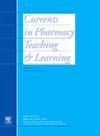逃离单一疾病孤岛:评估与多种疾病状态相关的逃生空间
IF 1.4
Q3 EDUCATION, SCIENTIFIC DISCIPLINES
引用次数: 0
摘要
越狱室在药学教育中的使用有所增加;然而,证据是有限的有效性,以加强药学内容。本研究的目的是评估密室逃生活动对二年级药学学生跨多种疾病状态知识的影响。方法将密室逃生活动融入药学博士综合药学实验课程,强化综合药物治疗课程中讲授的多种疾病状态。学生们完成了与所学知识相关的活动前和活动后测验。数据收集于综合药学实验课程的三组学生。结果55名从2023年秋季到2024年秋季注册的学生选择了这项研究。总的来说,在活动前和活动后得分之间观察到很大的效应量(Cohen’s d = 1.80, p <;0.001),表明测验分数增加了1.8个标准差。单独来看,所有三个队列都表现出了很大的效应量,这表明测验成绩提高的模式是一致的(2023年秋季:Cohen’s d = 1.29, p <;0.001;2024年夏季:Cohen’s d = 2.17, p = 0.001;2024年秋季:科恩指数d = 2.76, p <;0.001)。学生对活动的总体看法是积极的,注意到它在巩固多种疾病状态知识方面的创造性方法。结论密室逃生活动增强了学生管理多种疾病状态的知识,在药学教育中具有促进学生参与和知识强化的有效主动学习策略。未来的实现应该考虑更大样本量的队列。本文章由计算机程序翻译,如有差异,请以英文原文为准。
Escaping single disease silos: Assessing an escape room related to multiple disease states
Introduction
Use of escape rooms in pharmacy education has increased; however, evidence is limited on their effectiveness in reinforcing pharmacy content. The purpose of this cohort study is to evaluate the effect of an escape room activity on second-year pharmacy students' knowledge across multiple disease states.
Methods
An escape room activity was integrated into a Doctor of Pharmacy Integrated Pharmacy Laboratory course to reinforce multiple disease states previously taught in Integrated Pharmacotherapy courses. Students completed a pre- and post-activity quiz related to their knowledge. Data was collected in three cohorts of students in the Integrated Pharmacy Laboratory course.
Results
Fifty-five students who were enrolled in the course from Fall 2023 to Fall 2024 opted into the study. In total, a large effect size was observed between pre- and post-activity scores (Cohen's d = 1.80, p < 0.001), indicating a 1.8 standard deviation increase in quiz scores. Individually, all three cohorts exhibited a large effect size, suggesting a consistent pattern in quiz score improvements (Fall 2023: Cohen's d = 1.29, p < 0.001; Summer 2024: Cohen's d = 2.17, p = 0.001; Fall 2024: Cohen's d = 2.76, p < 0.001). Student perception of the activity was overall positive, noting its creative approach on solidifying knowledge of multiple disease states.
Conclusion
The escape room activity enhanced students' knowledge of managing multiple disease states, highlighting its potential as an effective active-learning strategy in pharmacy education to promote student engagement and knowledge reinforcement. Future implementations should consider cohorts with larger sample sizes.
求助全文
通过发布文献求助,成功后即可免费获取论文全文。
去求助
来源期刊

Currents in Pharmacy Teaching and Learning
EDUCATION, SCIENTIFIC DISCIPLINES-
CiteScore
2.10
自引率
16.70%
发文量
192
 求助内容:
求助内容: 应助结果提醒方式:
应助结果提醒方式:


